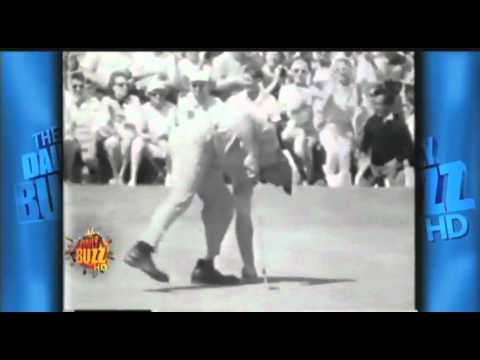
- Order:
- Duration: 3:21
- Published: 18 Mar 2011
- Uploaded: 18 Mar 2011
- Author: Zondervancom







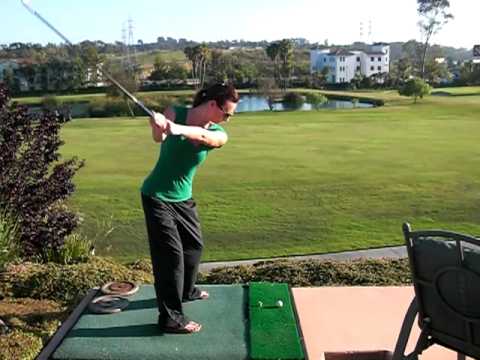





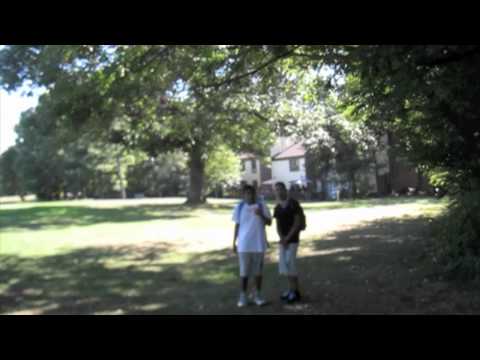


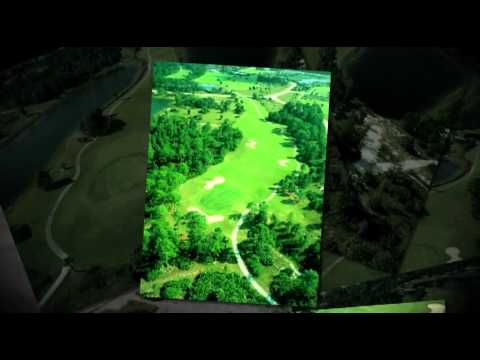










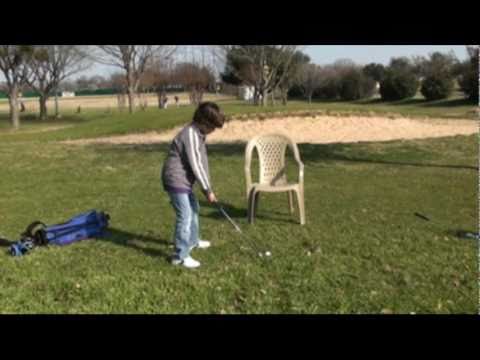















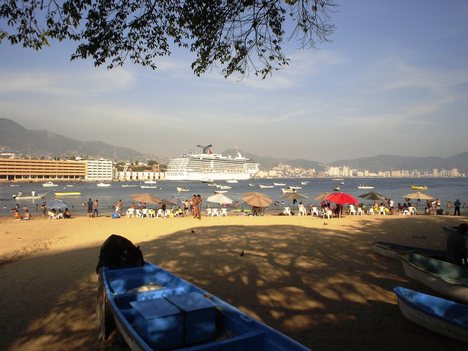

















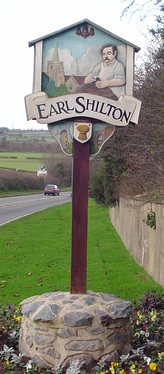
| Coordinates | 53°19′56″N6°15′22″N |
|---|---|
| Name | Golf |
| Caption | A golfer in the finishing position after taking a shot |
| Union | R&A;USGA |
| First | 15th century |
| Contact | No |
| Rules | USGA's Rules of Golf |
| Category | Outdoor |
| Ball | Golf clubs, golf ball |
| Olympic | 1900, 1904, 2016, 2020 |
It is one of the few ball games that does not require a standardized playing area. Instead, the game is played on golf "courses", each of which features a unique design, although courses typically consist of either nine or eighteen holes. Golf is defined, in the rules of golf, as "playing a ball with a club from the teeing ground into the hole by a stroke or successive strokes in accordance with the Rules."
Golf competition is generally played for the lowest number of strokes by an individual, known simply as stroke play, or the lowest score on the most individual holes during a complete round by an individual or team, known as match play.
The modern game originated in Scotland, where the first written record of golf is James II's banning of the game in 1457, as an unwelcome distraction to learning archery.
The levels of grass are varied to increase difficulty, or to allow for putting in the case of the green. While many holes are designed with a direct line-of-sight from the teeing area to the green, some holes may bend either to the left or to the right. This is commonly called a "dogleg", in reference to a dog's knee. The hole is called a "dogleg left" if the hole angles leftwards and "dogleg right" if it bends right. Sometimes, a hole's direction may bend twice; this is called a "double dogleg".
A typical golf course consists of eighteen holes but nine-hole courses are common and can be played twice through for a full round of eighteen holes.
Early Scottish golf courses were primarily laid out on links land, soil covered sand dunes directly inland from beaches. This gave rise to the term golf links, particularly applied to seaside courses and those built on naturally sandy soil inland.
The first eighteen-hole golf course in the United States was located on a sheep farm in Downers Grove, Illinois, in 1892. The course is still situated there today.
Playing a hole on a golf course is initiated by putting a ball into play by striking it with a club on the teeing ground (also called the tee box, or simply the tee). When this initial stroke (or 'shot') is required to be long due to the length of the hole, it is usual (but not required) for a golfer to suspend (or 'tee-up') the ball on a tee prior to striking it. A tee in this last sense is a small peg which can be used to elevate the ball slightly above the ground up to a few centimetres high. This elevation is at the discretion of the golfer. Tees are commonly made of wood but may be constructed of any material; the ball may even be teed on a mound of grass or dirt (at one time a small pile of sand placed by the golfer was routinely used and sand was provided at teeing grounds for golfers' use).
When the initial shot on a hole is a long-distance shot intended to move the ball a great distance down the fairway, this shot is commonly called a 'drive'. Shorter holes generally are initiated with shorter clubs called irons. Once the ball comes to rest, the golfer strikes it again as many times as necessary using shots that are variously known as a 'lay-up', an 'approach', a 'pitch', or a 'chip', until the ball reaches the green, where he or she then 'putts' the ball into the hole (commonly called "sinking the putt"). The goal of getting the ball into the hole ("holing" the ball) in as few strokes as possible may be impeded by obstacles such as areas of long grass called 'rough' (usually found alongside fairways) which both slows any ball that contacts it and makes it harder to advance a ball that has stopped on it, bunkers (or sand traps), and water hazards. A caddy's advice can only be given to the player or players for whom the caddy is working, and not to competing players.
The underlying principle of the rules is fairness. As stated on the back cover of the official rule book: :Play the ball as it lies, play the course as you find it, and if you cannot do either, do what is fair.
There are strict regulations regarding the amateur status of golfers. Essentially, anybody who has ever received payment or compensation for giving instruction, or played golf for money, is not considered an amateur and may not participate in competitions limited solely to amateurs. However, amateur golfers may receive expenses which comply with strict guidelines and they may accept non-cash prizes within the limits established by the Rules of Amateur Status.
In addition to the officially printed rules, golfers also abide by a set of guidelines called golf etiquette. Etiquette guidelines cover matters such as safety, fairness, pace of play, and a player's obligation to contribute to the care of the course. Though there are no penalties for breach of etiquette rules, players generally follow the rules of golf etiquette in an effort to improve everyone's playing experience.
A lost ball or a ball hit out of bounds result in a penalty of one stroke and distance (Rule 27-1). A one-stroke penalty is assessed if a player's equipment causes the ball to move or the removal of a loose impediment causes the ball to move (Rule 18-2). If a golfer makes a stroke at the wrong ball (Rule 19-2) or hits a fellow golfer's ball with a putt (Rule 19-5), the player incurs a two-stroke penalty. Most rule infractions lead to stroke penalties but also can lead to disqualification. Disqualification could be from cheating, signing for a lower score, or from rule infractions that lead to improper play.
The 'driver' is the largest-headed and longest club. Woods are slightly shorter but still comparatively large-headed clubs, used for long-distance fairway shots. Woods are now typically made of metal; the traditional name remains in general use but is gradually being replaced by the term "fairway metal". Next shorter in length are the irons, the most numerous and versatile class used for a wide variety of shots. Hybrids embody the characteristics of both woods and irons in varying degrees and are increasingly being used in preference to long irons in many places because they are easier for the average golfer to use. Finally, the putter is used to roll the ball across the green into the cup.
A maximum of fourteen clubs is allowed in a player's bag at one time during a stipulated round. The choice of clubs is at the golfer's discretion, although every club must be constructed in accordance with parameters outlined in the rules. (Clubs which meet these parameters are usually called 'conforming'.) Violation of these rules can result in disqualification.
The exact shot hit at any given time on a golf course, and which club is used to accomplish the shot, are always completely at the discretion of the golfer; in other words, there is no restriction whatsoever on which club a golfer may or may not use at any time for any shot.
Golf balls are spherical, usually white (although other colours are allowed), and minutely pock-marked by dimples that decrease aerodynamic drag by decreasing air turbulence around the ball in motion, thereby allowing the ball to fly farther.
A tee is allowed only for the first stroke on each hole, unless the player must hit a provisional tee shot or replay his or her first shot from the tee.
Many golfers wear golf shoes with metal or plastic spikes designed to increase traction, thus allowing for longer and more accurate shots. A golf bag is used to transport golf clubs and the player's other or personal equipment. Golf bags have several pockets designed for carrying equipment and supplies such as tees, balls, and gloves. Golf bags can be carried, pulled on a trolley or harnessed to a motorized golf cart during play. Golf bags have both a hand strap and shoulder strap for carrying, and sometimes have retractable legs that allow the bag to stand upright when at rest.
Golfers start with the non-dominant side of the body facing the target. At address the body and club are positioned parallel to the target line. The feet are commonly shoulder-width apart for middle irons and putters, narrower for short irons and wider for long irons and woods. The ball is positioned in the centre of the player's stance for short irons and putters, more to the front for middle irons and even more for long irons and woods. The golfer chooses a golf club, grip, and stroke appropriate to the distance:
The key factor for classifying the par of a hole is the distance from the tee to the green. A typical par-3 hole is less than 250 yards (225 m) in length, with a par-4 hole ranging between 251 and 475 yards (225–434 m), and a par-5 hole being longer than 475 yards (435 m). The rare par-6s can stretch well over 650 yards (595 m).
The gradient of the hole can also affect its par. If the tee-to-green distance on a hole is predominantly downhill, it will play shorter than its physical length and may be given a lower par; the opposite is true for uphill holes. Par ratings are also affected by factors such as the placement of hazards or the shape of the green, which can affect the play of a hole by requiring an extra stroke to avoid playing into hazards.
Eighteen-hole courses may typically comprise four par-3, ten par-4, and four par-5 holes, though other combinations exist and are not less worthy than courses of par-72. Many major championships are contested on courses playing to a par of 70, 71, or 72. Additionally, in some countries, courses are classified according to their play difficulty, which may be used to calculate a golfer's playing handicap for a given course.
There are also popular unofficial variations on team play:
Scramble: also known as ambrose or best-shot; each player in a team tees off on each hole, and the players decide which shot was best. Every player then plays their second shot from within a clublength of where the best shot has come to rest, and the procedure is repeated until the hole is finished. In a champagne scramble, each player in a team tees off on each hole. The best drive is used and all players play their own ball from this spot. In best-ball, each player plays the hole as normal, but the lowest score of all the players on the team counts as the team's score. Greensome: also called modified alternate shot; both players tee off, and then pick the best shot as in a scramble. The player who did not shoot the best first shot plays the second shot. The play then alternates as in a foursome. A variant of greensome is sometimes played where the opposing team chooses which of their opponent's tee shots the opponents should use. The player who did not shoot the chosen first shot plays the second shot. Play then continues as a greensome.
In stroke play competition, the competitor's handicap is subtracted from their total gross score at the end of the round, to calculate a net score against which standings are calculated. In match play competition, handicap strokes are assigned on a hole-by-hole basis, according to the handicap rating of each hole (which is provided by the course). The hardest holes on the course receive the most handicap strokes, with the easiest holes receiving the least handicap strokes.
Calculating a handicap is often complicated, but essentially it is representative of the average over par of a number of a player's previous above-average rounds, adjusted for course difficulty. Legislation regarding the calculation of handicaps differs among countries. For example, handicap rules may include the difficulty of the course the golfer is playing on by taking into consideration factors such as the number of bunkers, the length of the course, the difficulty and slopes of the greens, the width of the fairways, and so on.
Handicap systems are not used in professional golf. Professional golfers often score several strokes below par for a round and thus have a calculated handicap of 0 or less, meaning that their handicap results in the addition of strokes to their round score. Someone with a handicap of 0 or less is often called a 'scratch golfer'.
The most notable example of this phenomenon is the expansion of golf in China. The first golf course in China opened in 1984, but by the end of 2009 there were roughly 600 in the country. Jack Nicklaus, who in late 2009 had either designed or had plans to design 35 courses in China, claimed in October of that year that China had plans to build 1,400 public courses in the next five years (currently, only a small number of China's courses are public), although a Chinese golf industry insider called Nicklaus' claim "bullshit". For the last several years, development of new golf courses in China has been officially banned, but the number of courses has nonetheless tripled since 2004; the "ban" has been easily evaded with the government's tacit approval simply by not mentioning golf in any development plans.
Golf instruction involves the teaching and learning of the game of golf. Proficiency in teaching golf instruction requires not only technical and physical ability, but also knowledge of the rules and etiquette of the game. In some countries, golf instruction is best performed by teachers certified by the Professional Golfers Association. Some top instructors who work with professional golfers have become quite well-known in their own right. Instructors use a combination of physical conditioning, mental visualization, classroom sessions, club fitting, driving range instruction, on-course play under real conditions, and review of videotaped swings in slow motion to teach golf.
Perhaps the most widely known tour is the PGA Tour, which tends to attract the strongest fields, outside the four Majors and the four World Golf Championships events. This is due mostly to the fact that most PGA Tour events have a first prize of at least US$800,000. The PGA European Tour, which attracts a substantial number of top golfers from outside North America, ranks second to the PGA Tour in worldwide prestige. Some top professionals from outside North America play enough tournaments to maintain membership on both the PGA Tour and European Tour.
The other leading men's tours include the Japan Golf Tour, the Asian Tour (Asia outside Japan), the PGA Tour of Australasia, and the Sunshine Tour (for southern Africa, primarily South Africa). The Japan, Australasian, Sunshine, PGA, and European Tours are the charter members of the trade body of the world's main tours, the International Federation of PGA Tours, founded in 1996. The Asian Tour became a full member in 1999. The Canadian Tour became an associate member of the Federation in 2000, and the Tour de las Américas (Latin America) became an associate member of the Federation in 2007. The Federation underwent a major expansion in 2009 which saw eleven new tours become full members — the Canadian Tour, Tour de las Américas, China Golf Association, the Korea Professional Golfers' Association, Professional Golf Tour of India, and the operators of all six major women's tours worldwide. The OneAsia Tour, founded in 2009, is not a member of the Federation, but was founded as a joint venture of the Australasia, China, Japan, and Korean tours. The charter members of the Federation, as well as the Asian, Canadian and OneAsia Tours, offer points in the Official World Golf Rankings to players who place sufficiently high in their events.
Golf is unique in having lucrative competition for older players. There are several senior tours for men aged fifty and over, arguably the best known of which is the U.S.-based Champions Tour.
There are six principal tours for women, each based in a different country or continent. The most prestigious of these is the United States based LPGA Tour. All of the principal tours offer points in the Women's World Golf Rankings for high finishers in their events.
All of the leading professional tours for under-50 players have an official developmental tour, in which the leading players at the end of the season will earn a tour card on the main tour for the following season. Examples include the Nationwide Tour, which feeds to the PGA Tour, and the Challenge Tour, which is the developmental tour of the European Tour. The Nationwide and Challenge Tours also offer Official World Golf Rankings points.
The major championships are the four most prestigious men's tournaments of the year. In chronological order they are: The Masters, the U.S. Open, The Open Championship (referred to in North America as the British Open) and the PGA Championship.
The fields for these events include the top several dozen golfers from all over the world. The Masters has been played at Augusta National Golf Club in Augusta, Georgia, since its inception in 1934. It is the only major championship that is played at the same course each year. The U.S. Open and PGA Championship are played at courses around the United States, while the Open Championship is played at courses around the United Kingdom.
Prior to the advent of the PGA Championship and The Masters, the four Majors were the U.S. Open, the U.S. Amateur, the Open Championship, and the British Amateur.
Of the five events, the Senior PGA is by far the oldest, having been founded in 1937. The other events all date from the 1980s, when senior golf became a commercial success as the first golf stars of the television era, such as Arnold Palmer and Gary Player, reached the relevant age. The Senior British Open was not recognised as a major by the Champions Tour until 2003. The European Seniors Tour recognises only the Senior PGA and the two Senior Opens as majors. However, the Champions Tour is arguably more dominant in global senior golf than the U.S. LPGA is in global women's golf.
Category:Precision sports Category:Ball games Category:Ball and bat games Category:Sports originating in Scotland Category:Leisure activities
This text is licensed under the Creative Commons CC-BY-SA License. This text was originally published on Wikipedia and was developed by the Wikipedia community.